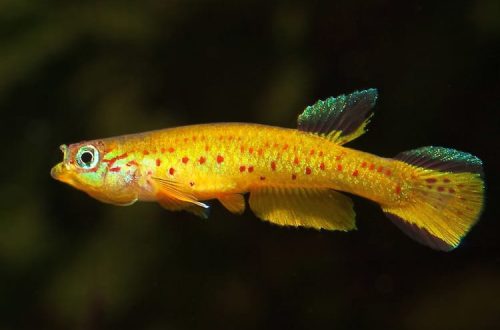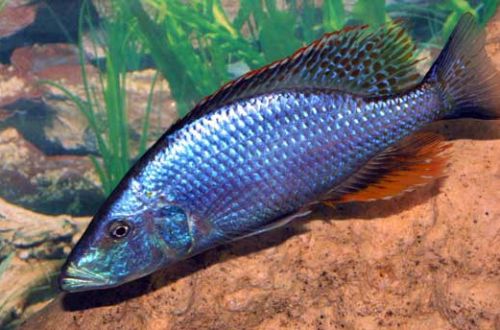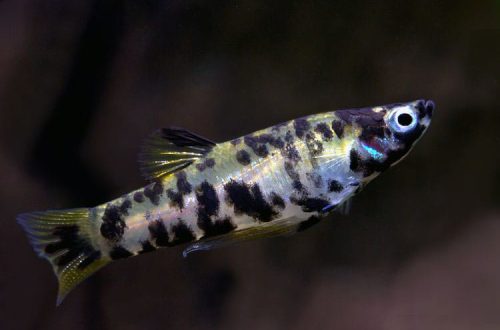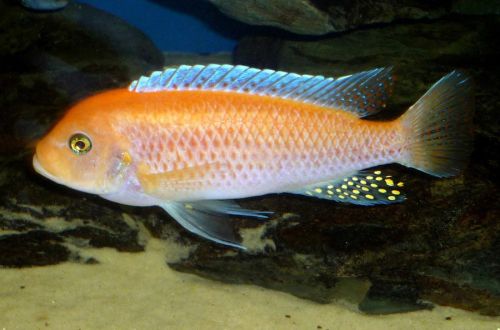
Red cichlid zebra
The red zebra cichlid, scientific name Maylandia estherae (formerly Pseudotropheus estherae), belongs to the Cichlidae family. Bright beautiful and agile fish with interesting behavior. It can be a great addition to a biotope aquarium where other Malawian cichlids already live. It is easy to keep and breed, but not easy in character, so it cannot be recommended for beginner aquarists.

Contents
Habitat
Endemic to Lake Malawi (another name is Nyasa) in Africa, located between the state of the same name Malawi, Tanzania and Mozambique. It lives along the rocky shoreline in the southern part of the lake.
Brief information:
- The volume of the aquarium – from 200 liters.
- Temperature – 24-28°C
- Value pH — 7.6–8.8
- Water hardness – medium to high hardness (10-25 dGH)
- Substrate type – sandy
- Lighting – moderate
- Brackish water – no
- Water movement – weak, moderate
- The size of the fish is 10–13 cm.
- Nutrition – any plant-based food
- Temperament – inhospitable
- Keeping in a harem with one male and several females
Description
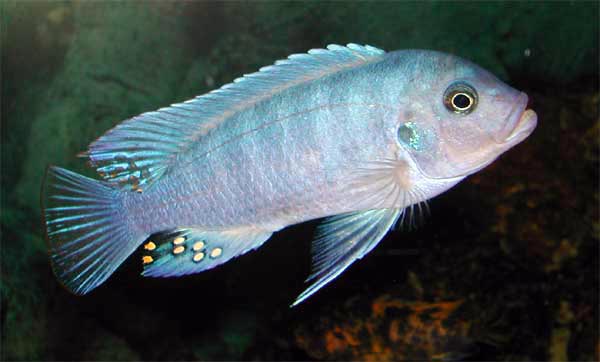
Adults reach a length of up to 13 cm. The males are somewhat larger, the color is blue, and the females are yellow. It is worth noting that depending on the specific area, the color changes to opposite colors. So, the male acquires yellow shades, and the females are blue. If there are fish of only one sex in the aquarium, then probably one of them will begin to combine all the colors at once.
Food
Accepts most popular feeds. However, the basis of the diet should be products with a high content of plant components. For example, you can serve spirulina flakes, nori pieces, etc.
Maintenance and care, arrangement of the aquarium
Optimal aquarium sizes for a small group of Red Zebra cichlids start at 150 liters. The decoration is quite simple and includes a sandy substrate, piles of stones and boulders. From the latter, you can build grottoes, caves in which fish will hide. Almost any hollow object is suitable as shelters. Natural driftwood will not only decorate the interior design, but also become a habitat for algae, an additional source of food for fish.
Maintenance does not cause much trouble if suitable hydrochemical conditions are provided, and the aquarium is regularly cleaned and part of the water is replaced weekly (15–20% of the volume) with fresh water.
Behavior and Compatibility
It belongs to the group of Mbuna cichlids, characterized by aggressive behavior of males. Moreover, aggression extends not only to potential competitors, but also to females and representatives of other species. You can reduce the degree of aggression in a species aquarium with numerous shelters, where there will be 3 or more females per male. Another way is a crowded aquarium with several species of Mbuna, provided that each male has his own place on the bottom, which he will protect from other fish. A large number of fish is characteristic of the natural habitat and allows you to disperse aggression.
Breeding / breeding
The appearance of fry is possible in a common aquarium. With the onset of the mating season, the male chooses a suitable place at the bottom. They can serve as any flat stone or depression in the sand – it will become a place for future spawning. Then very energetic courtship begins, from which females often have to hide in shelters. When the female is ready, she accepts courtship and alternately lays several portions of eggs, and after fertilization takes them into her mouth. The entire incubation period will take place in the female’s mouth and the fry will not leave their nest until they are large enough. A similar mechanism for protecting offspring is characteristic of the cichlids of Lake Malawi.
Fish diseases
The main cause of most diseases in Malawian cichlids is inadequate housing conditions and poor quality food, which often leads to such a disease as Malawi bloat. If the first symptoms are detected, you should check the water parameters and the presence of high concentrations of hazardous substances (ammonia, nitrites, nitrates, etc.), if necessary, bring all indicators back to normal and only then proceed with treatment. Read more about symptoms and treatments in the Aquarium Fish Diseases section.



